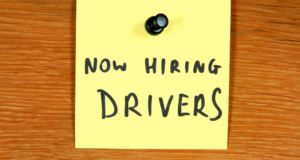Death by Delayed Defense
by , Esq., Shareholder, Saxton & Stump
DELAYED DEFENSE OF trucking accident cases is deadly. If you wait until after the suit is filed, you’re already too late.
Waiting permits plaintiffs to exaggerate medical bills and lost wages, resulting in an inflated claim that hemorrhages funds paid by the trucking company from its deductible or retention. For insurance companies, the impact is amplified member-by-member.
Stop the bleeding and begin your defense immediately after the accident.
A LESSON
Malcolm Gladwell, in a famous 2009 New Yorker article “How David Beats Goliath,” tells how Vivek Ranadive — now the owner of the NBA’s Sacramento Kings — coached his 12-year-old daughter’s basketball team to the national championship. He did it by not delaying defense.
Ranadive had no experience in basketball. He was from Mumbai and played cricket and soccer.
But Ranadive saw something that puzzled him. The other teams let their opponents bring the ball uncontested to half court.
They did not begin to defend until half court, ceding half the court uncontested.
Ranadive’s team full-court pressed, defending endline-to-endline. Despite only one of the girls having any prior experience of note, they went to the national championship game.
So why do you cede the first months, or years, and allow the plaintiff’s claims to pick up steam? Defend your cases endline-to-endline.
PUSH BACK AGAINST THE LETTER OF REPRESENTATION
The first salvo from the plaintiff is the letter of representation. You know it by heart. “I represent the plaintiff in this matter … No more communication to my client … I will provide a demand when my client is done treating.”
Then the game begins — referral to “their” doctors, “ring the bell” treatments, and run-up bills. And too many on our side sit idly by and let this happen.
Instead, defend immediately. Push back.
Respond to the letter. Set the tone. Dictate the pace.
When my clients receive such a letter, I respond immediately. “I represent the trucking company.
No more communication to them.”
I go further. “Enclosed are releases for medical and employment records. Please return the signed releases and the names and addresses of the providers and employers.”
The message that gives is: The case starts now, not when you are ready. This is not “hit-a-truck-get-a-check” business as usual. You’re in for a fight.
EARLY EXAM
But wait, there’s more. I then request an independent exam. Immediately.
The response is always the same: “What legal right do you have to do so?” “None. But I have documented my request to examine your client at this time. If your client’s injuries and treatment are legitimate, why would you refuse?”
Most times they relent. The plaintiff now knows we have a doctor who can see them early and can rebut the claim of needed treatment. Moreover, we are no longer susceptible to the testimony of their doctor, who would have been the only one to see them pre-suit.
The message sent: “We are not allowing you to have the only medical witness to have seen the plaintiff early on. Alternatively, if you deny us, you have some explaining to do. And now you are on the defensive.”
EARLY INVESTIGATION
Start your investigation immediately. Perform a social media search on their publicly available platforms such as Facebook, Instagram and TikTok (and remember, no one is too old for these platforms). Then continue to monitor social media throughout the litigation.
Do a background search, including an ISO ClaimSearch, which is the insurance database to which insurers submit information about claims. This will let you know if this person is a serial suer.
EARLY SURVEILLANCE
This process can be expensive and is often not productive. But if you are successful….
In the face of a claim which is being built upon claims of ongoing injuries, surveillance can provide objective evidence to the contrary.
In today’s YouTube society, the visual is the persuasive — and not just to the jury. Plaintiffs’ attorneys don’t want to waste their time and money on someone who is splitting logs despite their “grievous injuries.” I can’t tell you how many times I heard the sound of a dropped case after sending video.
Maximize the potential for productive surveillance of the plaintiff’s activities and schedule by doing your research on publicly available social media.
SUE THEM FIRST
Defending doesn’t mean being defensive. Consider suing them first if there is an argument on liability and you suffered damages (physical injuries, lost cargo, downtime).
Suing has several benefits. First, it can establish jurisdiction in a more conservative location instead of being dragged into a judicial hellhole where you are “doing business.”
The success of this depends on the laws or rules of the particular state. However, doing so can save your company millions.
Second, you get the jump on discovery. While the plaintiff’s attorney is having his client run up damages, you have subpoena power. You have the ability to propound interrogatories and requests for documents against the plaintiff, who is defended by his auto insurer’s attorney.
If you’re successful in establishing fault on the plaintiff, you can preclude a suit against you or at least lock in a percentage of fault to reduce the liability in any future action.
The bottom line is delayed defense permits plaintiffs the unfettered initiative and ability to inflate their claim. Defense starts when the accident occurs, not when the suit is filed.
Set the tone. Start the defense.




